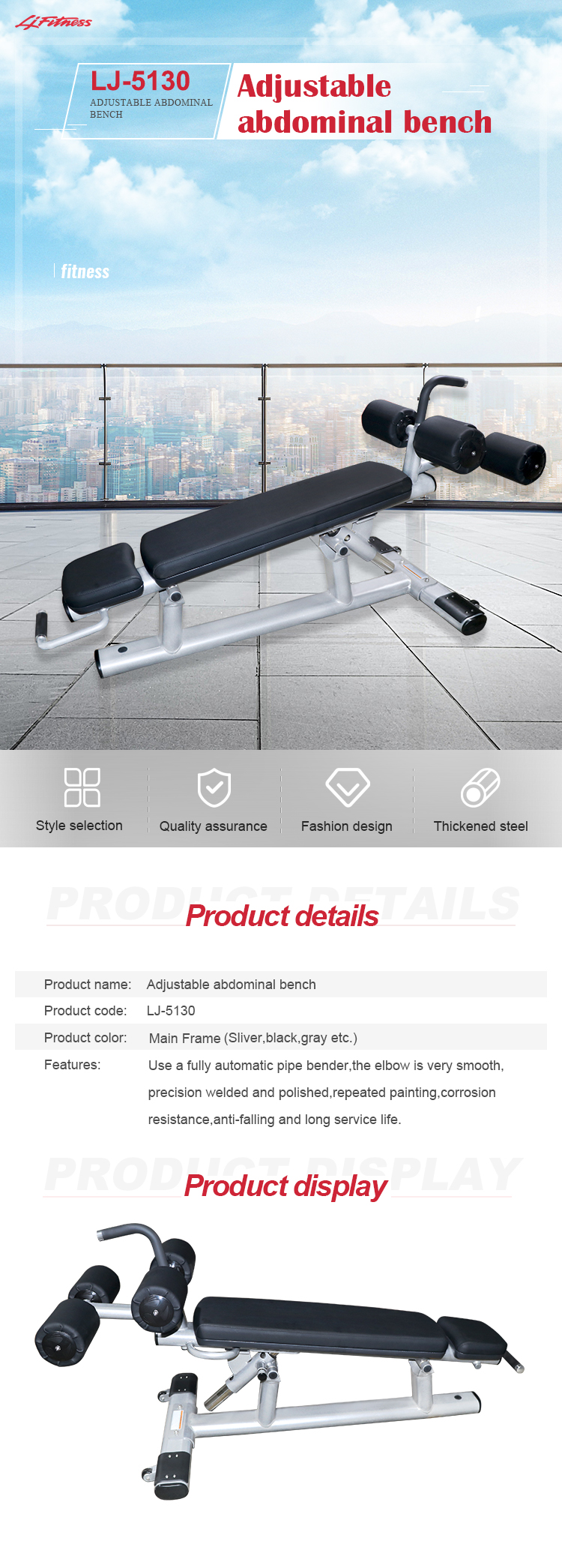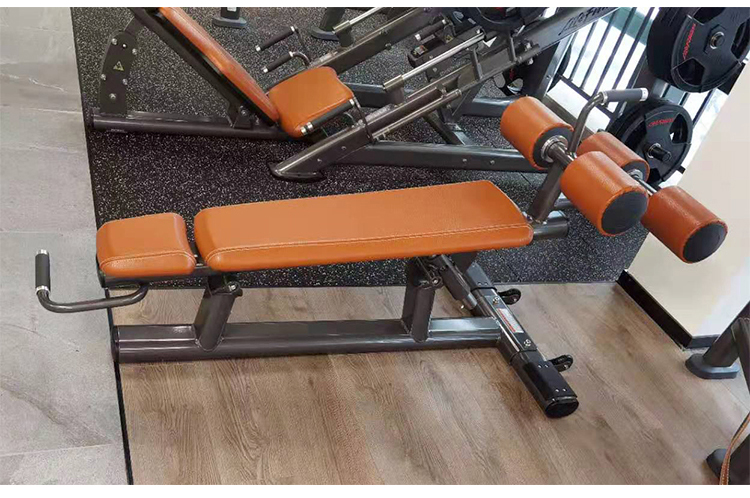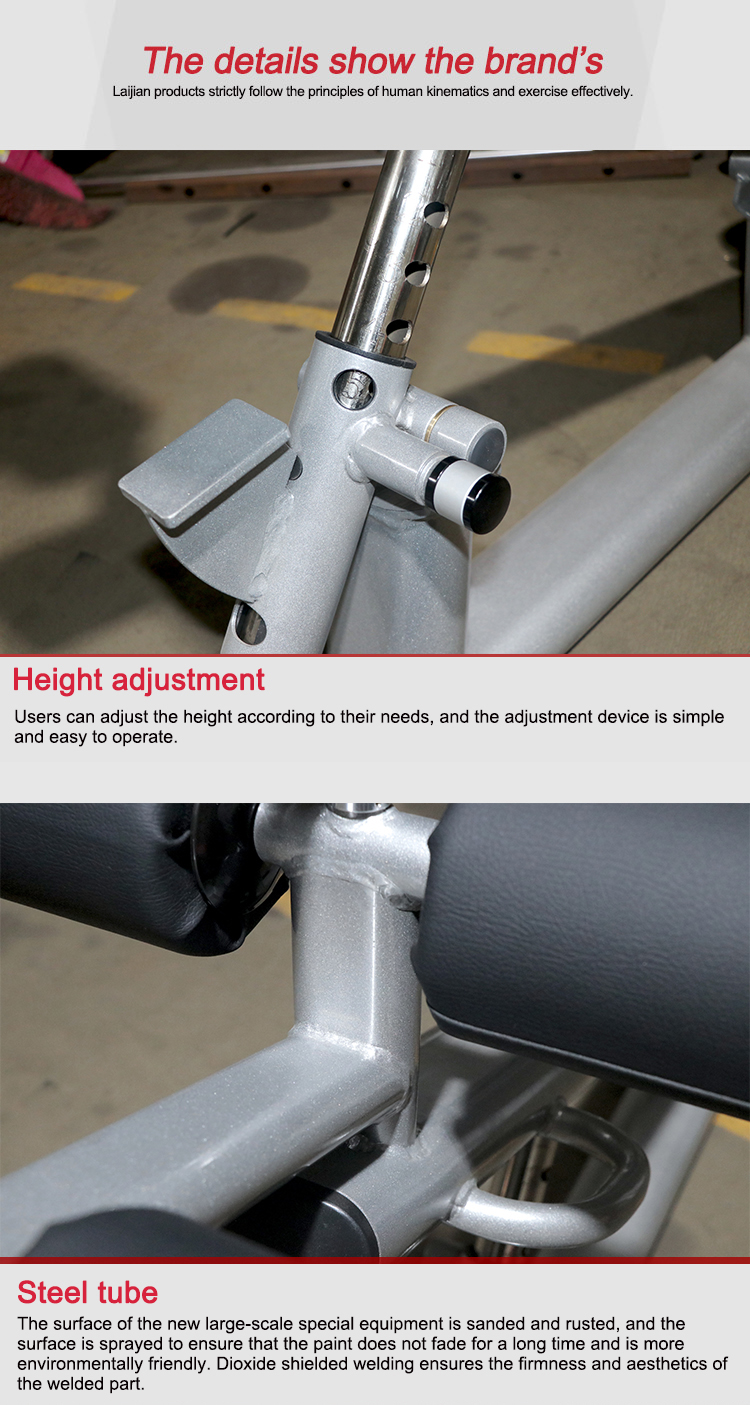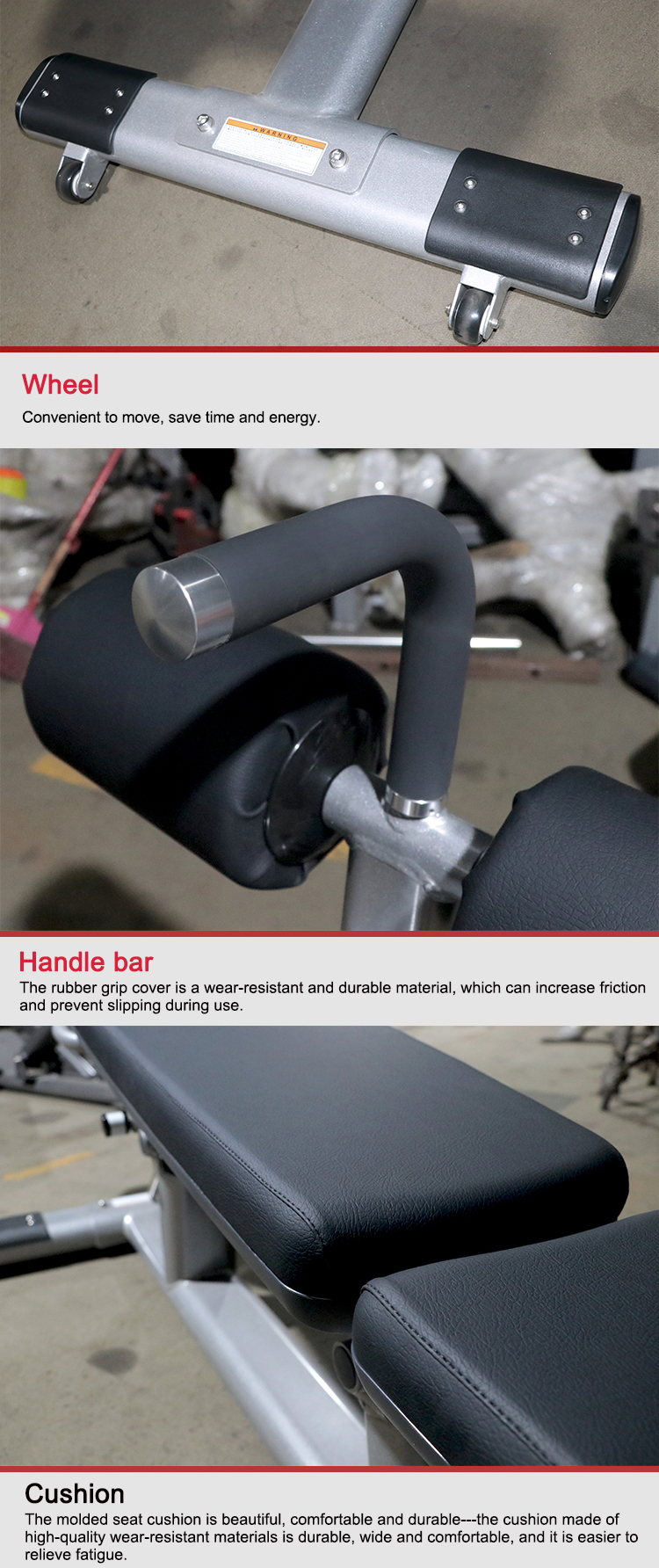An adjustable decline/abdominal crunch bench machine is a fitness equipment designed to target and strengthen the abdominal muscles. It typically consists of a padded bench with an adjustable decline angle, allowing users to perform decline exercises for their abs.
The machine usually has a footrest or foot rollers to hold the user's feet in place during the exercise. This helps to stabilize the body and isolate the abdominal muscles. The bench may also have padded rollers or handles to support the user's upper body and provide additional stability.
Using the adjustable decline/abdominal crunch bench machine, users can perform various exercises such as decline sit-ups, crunches, and oblique twists. These exercises effectively engage the rectus abdominis, obliques, and other core muscles.
The adjustable feature allows users to modify the decline angle to increase or decrease the intensity of the exercise. This enables individuals of different fitness levels to customize their workout based on their strength and goals.
When using the machine, it is important to maintain proper form and avoid straining the neck or lower back. Users should engage their core muscles and focus on contracting the abdominal muscles throughout the movement.
Overall, an adjustable decline/abdominal crunch bench machine is a versatile and effective tool for targeting and strengthening the abdominal muscles. It can be found in gyms, fitness centers, and even in some home gyms.
What are the benefits of abs bench?
The abs bench, also known as an abdominal bench or crunch machine, is a piece of gym equipment designed to target the rectus abdominis (the "six-pack" muscles) and other core muscles. It offers several benefits for individuals looking to strengthen and tone their abdominal muscles, improve posture, and enhance overall core stability. Here are some key advantages:
1. **Specific muscle targeting**: The abs bench allows for focused isolation of the rectus abdominis, which can lead to more effective muscle development compared to traditional floor exercises like sit-ups or planks.
2. **Progression**: As you get stronger, you can adjust the resistance by changing the weight plates or using different settings on the machine, allowing for progressive overload and continued muscle growth.
3. **Form**: Unlike floor exercises where maintaining proper form can be challenging, the abs bench provides a stable base, reducing the risk of injury and ensuring you're working your abs effectively.
4. **Reduced strain on lower back**: Using the bench can help take pressure off the lower back, making it a safer option for those with lower back issues or those who want to minimize strain during ab workouts.
5. **Easier for beginners**: For people new to abdominal training or with limited flexibility, the bench can provide a gentler introduction to core exercises, making it easier to learn proper technique.
6. **Core stability**: Regular abs bench use can contribute to better core stability, which is essential for balance, posture, and athletic performance.
7. **Complement to other exercises**: Incorporating the abs bench into a well-rounded workout routine can help diversify your core training and prevent muscle imbalances.
8. **Low-impact**: This machine-based exercise is generally low-impact, which can be beneficial for those recovering from injuries or looking for a gentler workout.
Remember that while the abs bench can be a useful tool, it's important to combine it with a balanced diet and other exercises that target all aspects of core strength, such as planks, Russian twists, and functional movements, for optimal results.Does bench press put pressure on abdomen?
Yes, the bench press can put pressure on the abdomen, especially if you perform the exercise with improper form or use heavy weights. When you lower the barbell during the eccentric phase of the bench press (the part where you lower the weight to your chest), your abs and lower abdominal muscles help stabilize your body and prevent the bar from resting directly on your sternum. This pressure on the abdomen can be temporary and manageable for most people, but it's crucial to maintain proper technique to avoid unnecessary strain.
If you feel excessive pressure or discomfort on your abdomen, adjust your form, use lighter weights, or consider alternative exercises that place less emphasis on the abdominal area, such as the dumbbell bench press or push-ups. It's always a good idea to consult a fitness professional if you have concerns about how an exercise is affecting your body.Are decline sit ups good?
Decline sit-ups, also known as decline bench sit-ups or decline crunches, can be an effective exercise for targeting the abdominal muscles, particularly the rectus abdominis, when performed correctly. They provide an extra challenge due to the incline, which engages your abs more than traditional sit-ups on a flat surface.
However, it's important to note that proper form is crucial to avoid injury and maximize benefits. If you have lower back issues or neck problems, you might need to consult with a healthcare professional or a certified personal trainer to ensure that you perform decline sit-ups safely.
Additionally, decline sit-ups may not be suitable for everyone, especially beginners or those with limited flexibility. It's essential to progress gradually and incorporate other core exercises, such as planks, Russian twists, or bicycle crunches, to develop a well-rounded core workout.
In summary, decline sit-ups can be good if done properly and with proper technique, but it's important to consider individual circumstances and consult with a professional if needed.What do abdominal rollers do?
Abdominal rollers, also known as exercise balls or stability balls, are fitness tools used to target the core muscles, particularly the rectus abdominis (the "six-pack" muscles), obliques, and lower back muscles. They are typically inflated plastic balls that you lie on your forearms and perform various exercises with.
Here are some common exercises and benefits of using abdominal rollers:
1. Crunches: Placing your hands on the roller, you can perform traditional crunches by lifting your upper body off the ball while engaging your abs. This helps strengthen and tone the rectus abdominis.
2. Reverse crunches: Lie face-up with your feet on the roller, and lift your legs up towards your chest, contracting your abs. This targets the lower abdominal muscles.
3. Side plank: Roll onto one side, supporting yourself on the elbow and the ball, and lift your hips off the floor, engaging your oblique muscles. This exercise helps with lateral stability and core strength.
4. Ball pass: Hold the roller behind your head and alternate passing it between your hands, keeping your abs tight. This works on core coordination and stability.
5. Russian twists: Sit on the ball with your feet flat on the ground, lean back slightly, and twist your torso from side to side. This exercise targets the obliques.
Using an abdominal roller can improve core strength, stability, posture, and balance. It's a versatile tool that can be incorporated into a well-rounded workout routine. However, it's important to maintain proper form and start with low-intensity exercises if you're new to using a roller to avoid injury. As with any exercise, consult with a healthcare professional before beginning, especially if you have any pre-existing conditions.













